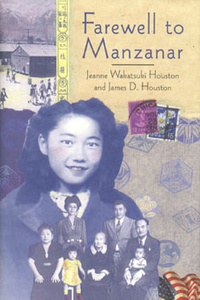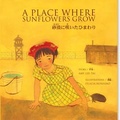“We never mentioned camp.”
For nearly twenty-five years after the end of World War II, Jeanne Wakatsuki Houston—and many other Japanese Americans imprisoned in concentration camps during the war—never spoke to others about her experiences as a child behind barbed wire at Manzanar.
“We never mentioned camp,” she says, “It was so subconscious...like it was a bad dream or that there was some shame involved with it. So you just don’t refer to it.”
During those years, many things changed in American society. Dr. Martin Luther King, Jr. and the civil rights movement raised awareness about injustice and inequality. People began to speak the truth of their own experiences and to question the status quo. New light was shed on historical inequities. Activists spoke out, demonstrated, and fought for social change.
Then, in the early 1970s, Wakatsuki Houston’s nephew asked her a question—a single question that would spark a personal quest for understanding, a groundbreaking novel, an award-winning film and a theatrical adaptation. He asked her how she felt about her childhood years spent at Manzanar.
She recalls: “No one ever asked me how I felt about that incident. And I just broke into tears and I just became hysterical and could not answer his question. I didn’t know what was happening...I thought I was having a nervous breakdown.”
Talking about her family’s experience at Manzanar proved to be too difficult, so Wakatsuki Houston decided to write a memoir to share with her family. Once she began working on the memoir, she realized that writing about her experiences was also emotionally overwhelming. She turned to her husband, James Houston, for help.
“I had known Jim twenty years at that time. We’d been married fifteen (years) and I’d never mentioned camp to him. He knew of some camp in my background but...it was so deeply buried that I just couldn’t talk about it. So I then began to tell him and he was so shocked,” she says.
After listening to her, James said, “You mean, I’ve known you all these years and you’ve been carrying that around with you? My god, this is not something just for your family. This is a story that every American should know about.”
The couple then worked together for a year on the memoir, Farewell to Manzanar, which was published in 1973.
Farewell to Manzanar
The Wakatsuki family was living in Ocean Park, California, when the Japanese attacked Pearl Harbor on December 7, 1941. Jeanne’s father, who was a fisherman at the time, was accused of providing oil to the Japanese. He was arrested during an FBI raid and sent to a detainment center in North Dakota. Jeanne was seven years old when the rest of her family was sent to the camp at Manzanar.
Farewell to Manzanar tells the story of how Jeanne’s family tried to adjust to life in the camp, living in cramped barracks and lacking in adequate services. Jeanne describes the effects of camp life on the family; how changes in everyday activities such as eating in the mess hall instead of a family dinner contributed to the disintegration of families in the camp. When her father finally re-joined the family at Manzanar, Jeanne notes that he was a changed man—for the worse. She describes her father’s descent into depression, rage and alcoholism. Finally, she notes: “He didn’t die there, but things finished for (my father) there, whereas for me it was like a birthplace. The camp was where our life lines intersected.” Wakatsuki Houston says that it was not until after the book was finished that she realized it was really a tribute to her father—an attempt to understand him better and, ultimately, a book about forgiveness.
Although it is the story of only one Japanese American family’s experiences, Farewell to Manzanar has become a modern classic and is widely considered a seminal work about the incarceration of Japanese Americans during World War II. Farewell to Manzanar has been considered on a par with The Diary of Anne Frank as an example of poignant literature about the effects of war on youth and the human spirit. In 2001, Publishers Weekly listed Farewell to Manzanar as one of the best-selling children’s books of all time, in a list that includes Charlotte’s Web and the Harry Potter series.
Made for Television
Not long after Farewell to Manzanar was published, the Houstons and producer-director John Korty wrote a screenplay for a television movie based on the book. Farewell to Manzanar—starring Yuki Shimoda, Nobu McCarthy and Pat Morita—aired on NBC in March 1976. The film was subsequently nominated for an Emmy, and it won a Humanitas Prize and a Christopher Award.
In 2003, Lt. Governor Cruz Bustamante arranged for 10,000 VHS copies of Farewell to Manzanar to be distributed free of charge to all public middle schools, high schools and libraries in California—along with copies of the book and accompanying lesson guides for teachers.
“This project aims to educate students and the general public about the unjust incarceration of more than 120,000 Japanese Americans during World War II,” said Bustamante. “I hope that we as a people can be more tolerant of our differences and understand that diversity is our nation’s strength, not its weakness.”
Farewell to Manzanar has never been released on video or DVD for public purchase, but thanks to Bustamante’s efforts, thousands of California students and Californians have viewed the film to learn about an important event in U.S. history, told through the experiences of one family.
On the Stage
Playwright/actress Cynthia Gates Fujikawa (Old Man River) adapted Farewell to Manzanar as a theatrical production for the Cornerstone Theater Company’s Literature to Life program, which afforded thousands of local high school students the opportunity to see the production at the Mark Taper Auditorium in the Los Angeles Public Library, and to discuss the play in relation to their own experiences.
The production, starring Page Leong and Leslie Ishii, was also performed at the Japanese American National Museum in November and December 2006. Leong and Ishii performed all of the roles in the play, including Jeanne Wakatsuki, her mother, and other characters. The actors alternately manipulated a bunraku-style puppet (designed by Lynn Jeffries) to portray Jeanne’s father, Ko Wakatsuki.
Looking to the Future
Many students and Californians have already experienced Farewell to Manzanar and learned about the Japanese American incarceration during World War II by reading the book, viewing the movie, or seeing the theatre production. To bring the story and the history to an even wider audience in a different form, Jeanne Houston is currently working on adapting Farewell to Manzanar as a musical feature film. Hopefully, someday the film will be released onto DVD or other future technology. For now, we can read the book.
* This article was originally published on the Japanese American National Museum Store Online.
© 2007 Japanese American National Museum






